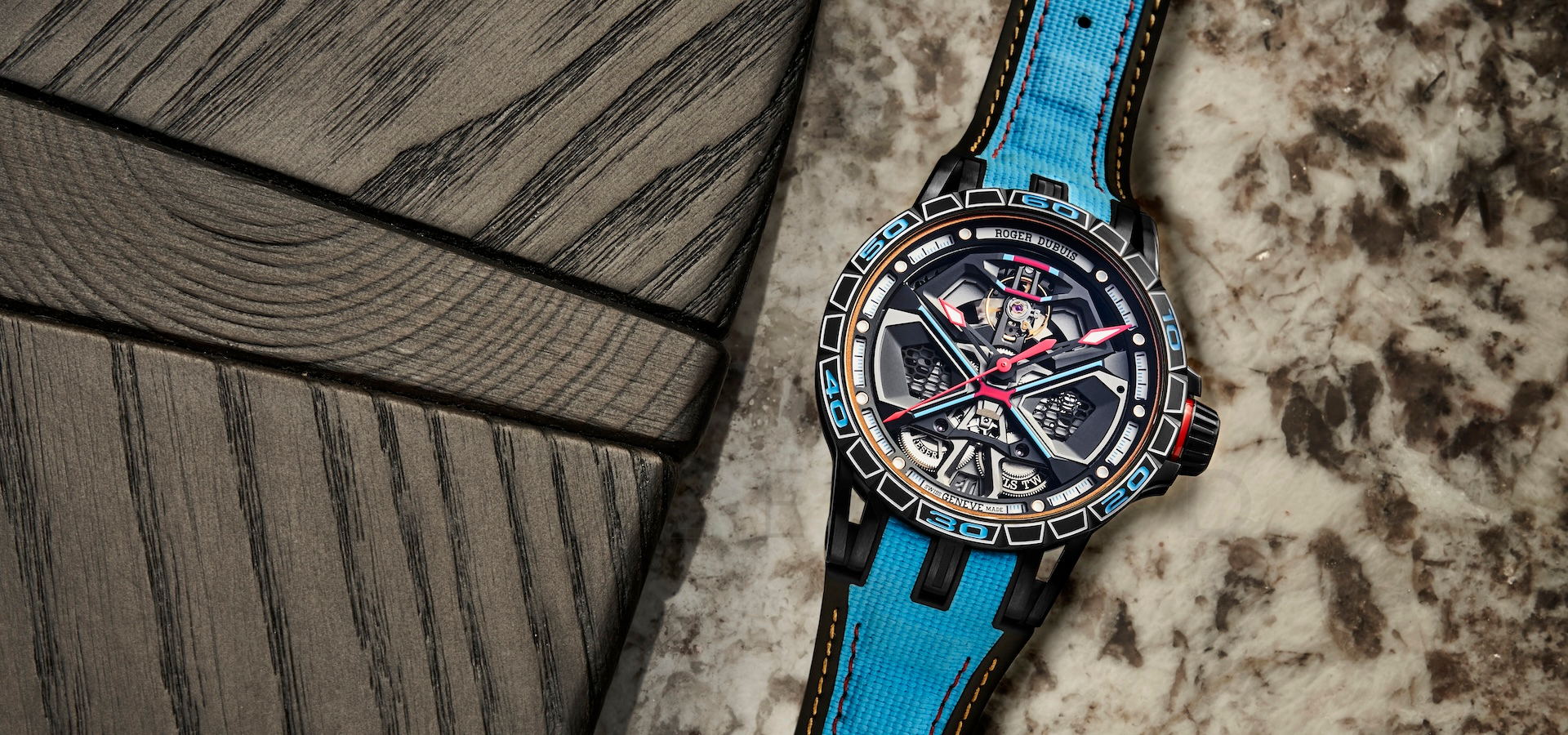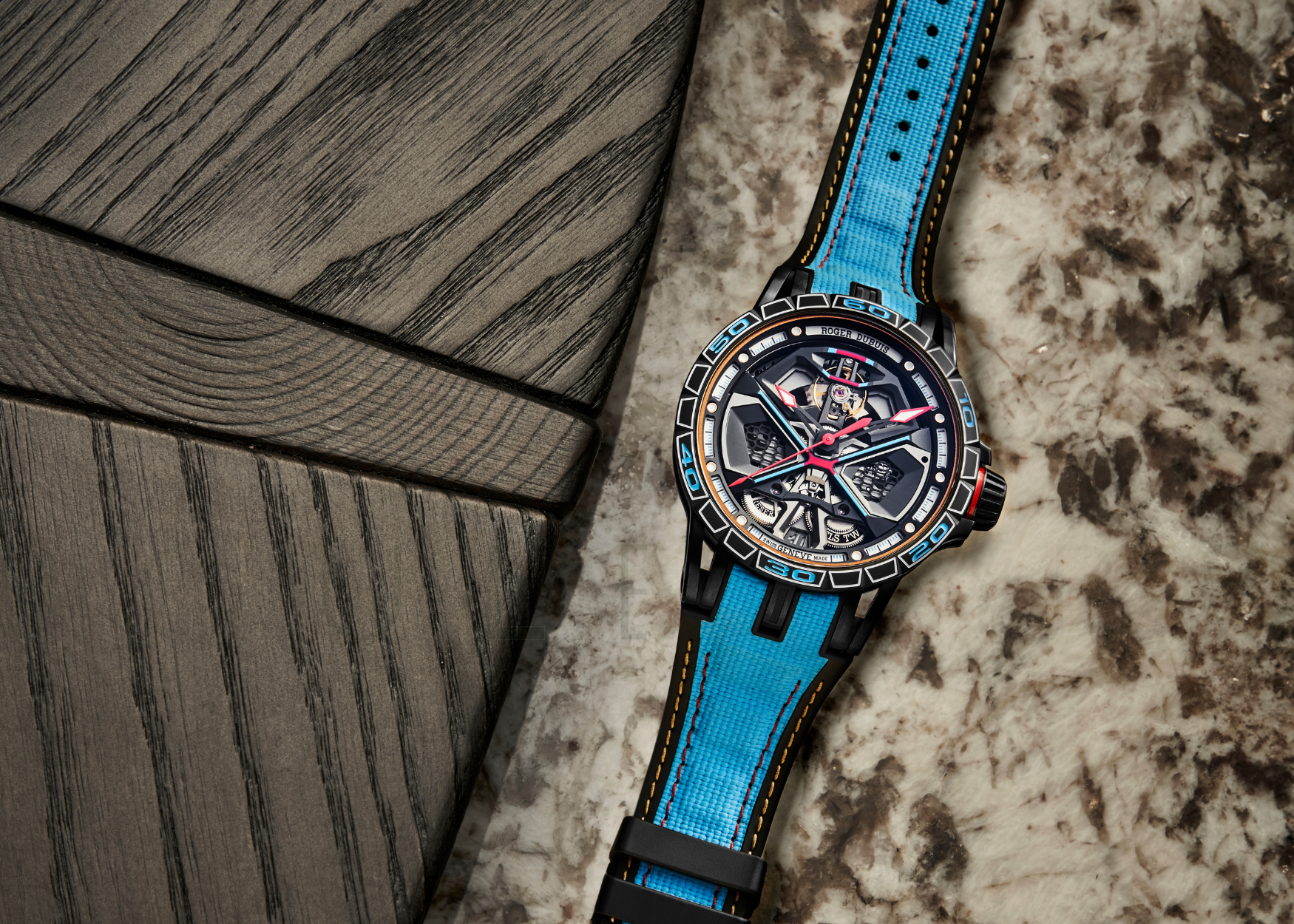Shot on location at Space Furniture
It’s almost difficult to recall the state of horology only a few decades ago, when high watches were elegant, svelte, timeless. How things have changed. These are the brands that blazed the trail.
Some products are the result of market demand. Others are trend-setters – think the iPhone or even ChatGPT. In the watch industry, these seminal timepieces have paved the path for innovation, setting in motion trends and disrupting the entire discourse on luxury watchmaking. Here, we highlight the pioneers of the past 30 years.
Bucking tradition: Ulysse Nardin Freak X Black
To understand the impact of the Ulysse Nardin Freak, one needs to understand the context of the watchmaking industry in the early 2000s. The quartz crisis of the 1970s had almost decimated mechanical watchmaking, if not for a few hardy (and optimistic) fellows who remained steadfast in their beliefs. By the time the 2000s rolled around, the effects of the crisis still resonated and there was a certain trepidation about shaking things up. Tradition remained the buzzword of the day.
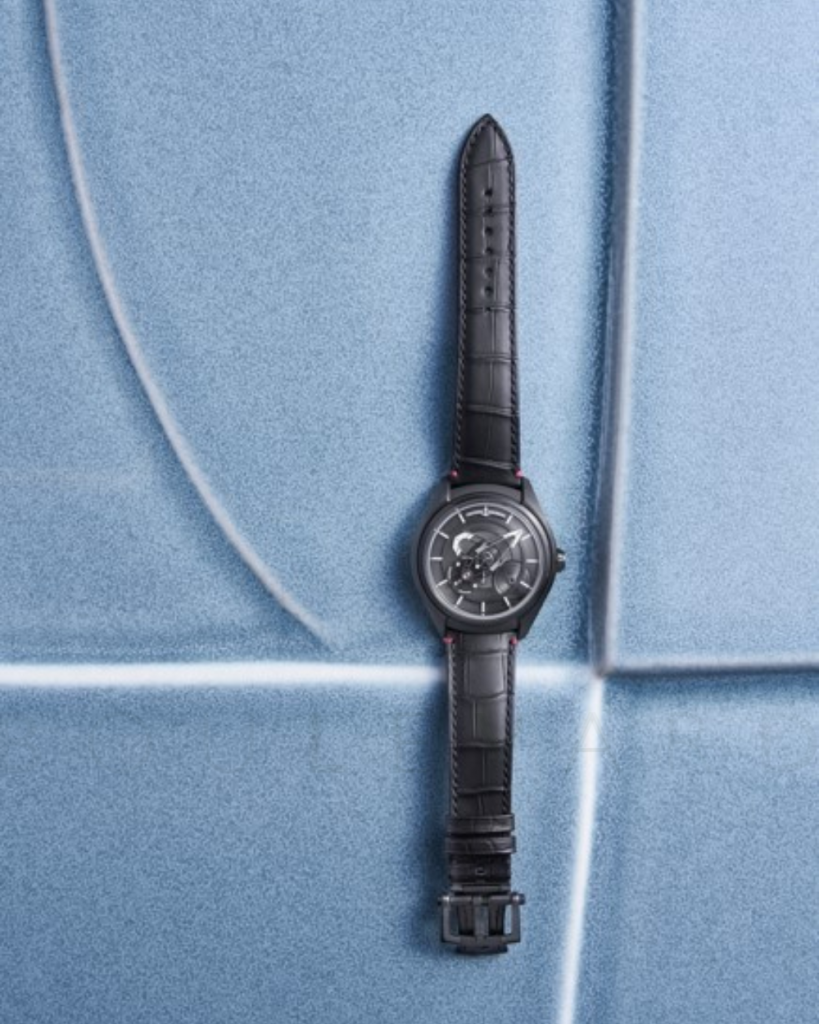

Left: Ulysse Nardin Freak X Black. Right: ‘Keramike’ outdoor table in glazed ceramic by Baxter.
Ulysse Nardin did not agree: with the Freak, launched in 2001, it broke convention by reinventing the escapement (essentially the part of the watch that supplies energy to the mechanism). Even more shockingly, it introduced a completely new material, silicon, to the watchmaking lexicon. Today, silicon is used by most watchmakers for its anti-magnetic and lightweight properties.
The watch featured no dial, but instead, the entire movement moved in tandem with the time. It was audacious and unusual, and set in motion the wheels of innovation in watchmaking. It was a fearless reminder that respecting tradition need not be synonymous with being stuck in the past.
Material innovation: Hublot Big Bang Original Gold Ceramic
Luxury watches should be associated with prestigious sports – the likes of tennis, sailing and yachting. But football? Not exactly a sport that screams sophistication. Yet, when Hublot took a gamble and sponsored a Swiss football team in 2006, it was par for the course for a brand that had never followed convention.
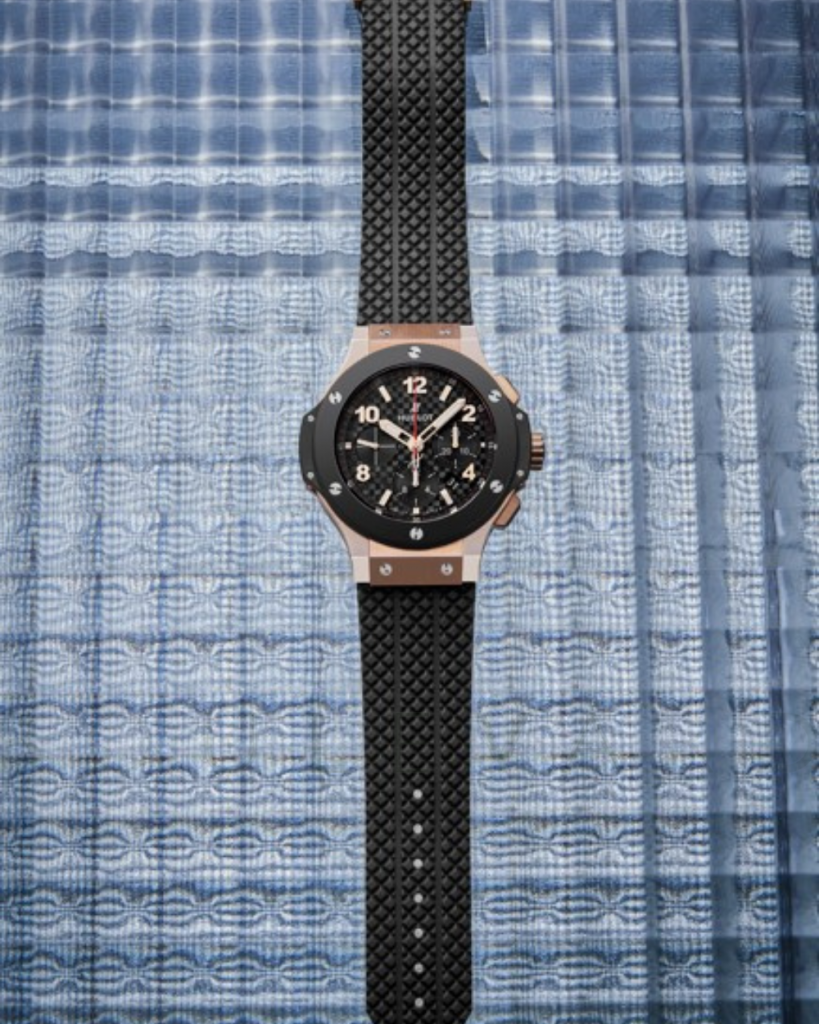

Left: Hublot Big Bang Original Gold Ceramic. Right: ‘Commodore’ sideboard in crystal-printed glass with mirror finish by Piero Lissoni for Glas Italia.
Born in the 1980s, Hublot had built a reputation for selling gold watches with rubber straps – a blasphemy at the time. Its fortunes ebbed until marketing legend Jean-Claude Biver took control of the brand in 2004. He doubled down on what he called the ‘Art of Fusion,’ bringing together the high-low dynamic and unconventional materials that had never before been seen in watchmaking. The brand’s signature collection, the Big Bang, has since lived up to the promise of its name. The first watch under Biver’s tutelage was a Big Bang hewn in pink gold and ceramic, paired with a rubber strap. It was an instant hit and earned the brand a 5.5 times increase in its yearly revenue.
Hublot is the Marmite of watchmaking, but there’s no denying the fact that it set in motion a number of breakthroughs that jolted the sleepy horological industry awake. Whether in material innovation or unexpected partnerships, it has made bold strides in redefining the meaning of luxury and attracting a new generation of watch collectors.
Pushing design boundaries: MB&F Horological Machine 1
In the 1600s, Genevan watchmakers like Isaac Penard would build watches that resembled skulls, crucifixes and stars. This kind of creativity dwindled in the 20th century but was brought back to life by Maximilian Büsser, founder of MB&F.
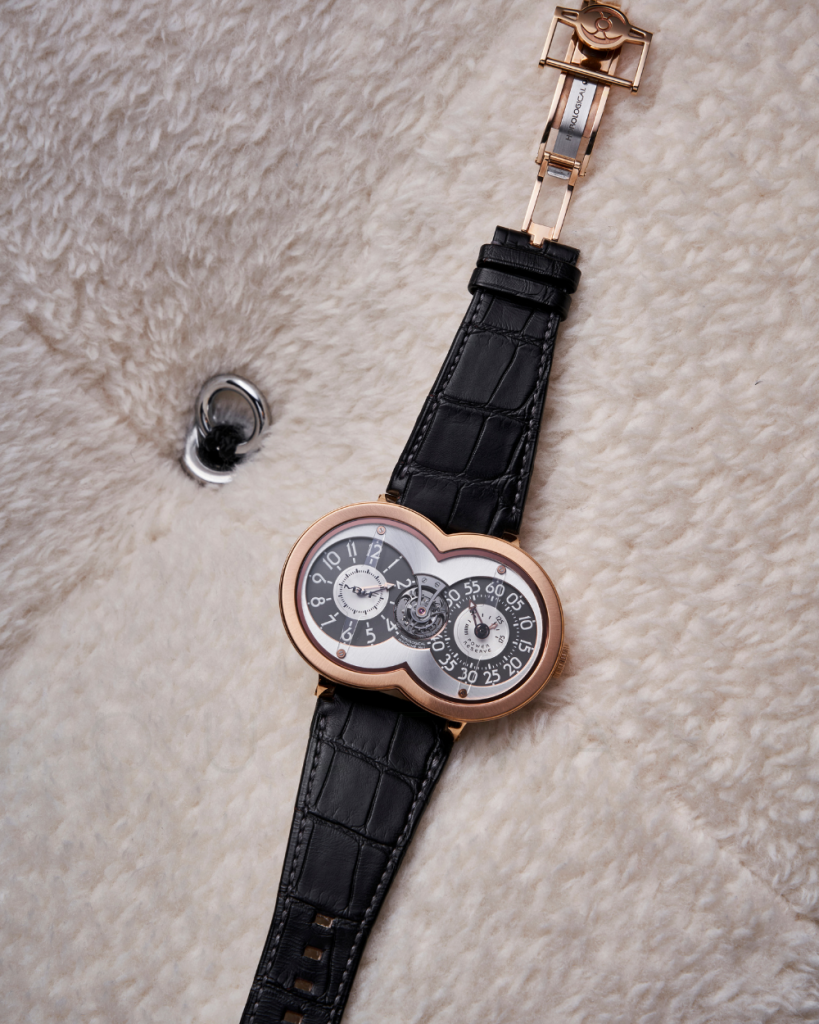
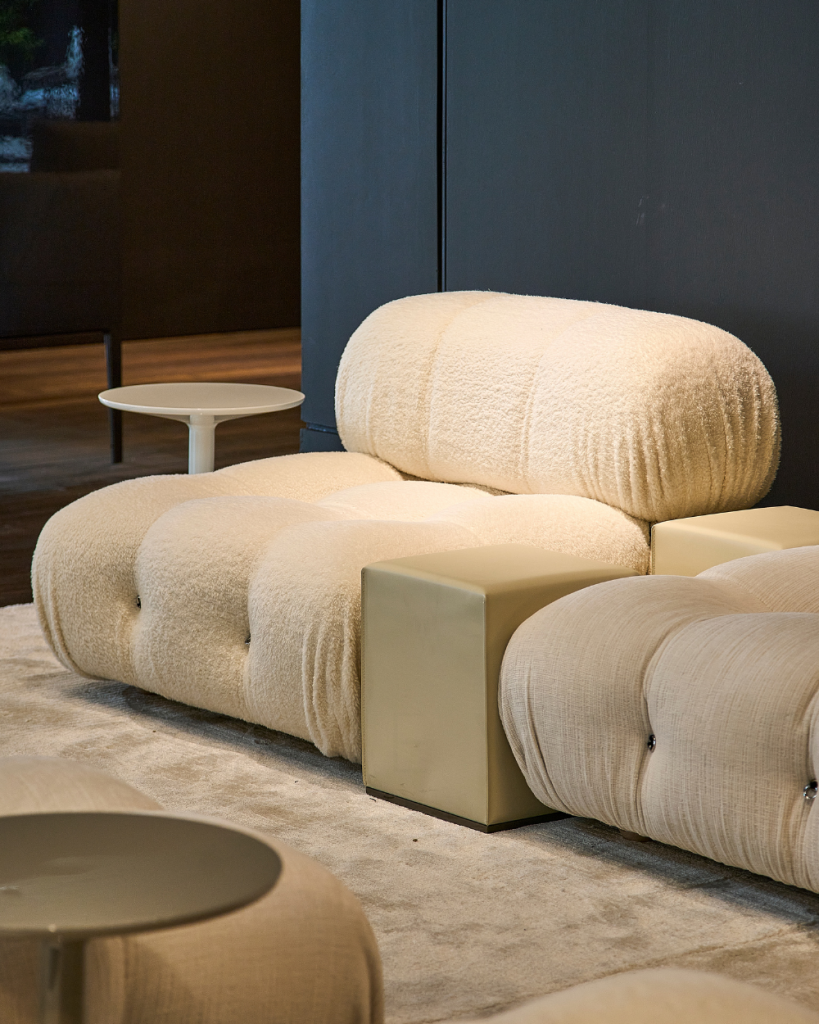
Left: MB&F Horological Machine 1 Mirage. Right: ‘Camaleonda’ modular sofa in milo fabric with chrome-finished rings by Mario Bellini for B&B Italia.
Formerly of Harry Winston, Büsser set up MB&F in 2005 with the idea of building a “watch laboratory” and collaborating with talented individuals to bring his sometimes otherworldly visions to life. Büsser’s contributions amplified the rise of the eccentric watch and pushed the boundaries of what a watch should look like. In the past 22 years, he has built a reputation for beautifully made timepieces that do look not like timepieces. Take the HM3 which looks like a frog, or the HM6 which looks like a spaceship.
But beyond his contributions to watch design, he has also demonstrated how independent watchmakers play an instrumental role in horology. Given that they are not tied to a conglomerate, they can think outside the box, and dare to experiment where traditional houses might not.
Outsized giants: Audemars Piguet Royal Oak Offshore Self-Winding Chronograph
There are some brands that go with the flow and simply react to market demand – others, like Audemars Piguet, are brave enough to take calculated risks and usher in new trends, often altering the way we wear and buy watches.
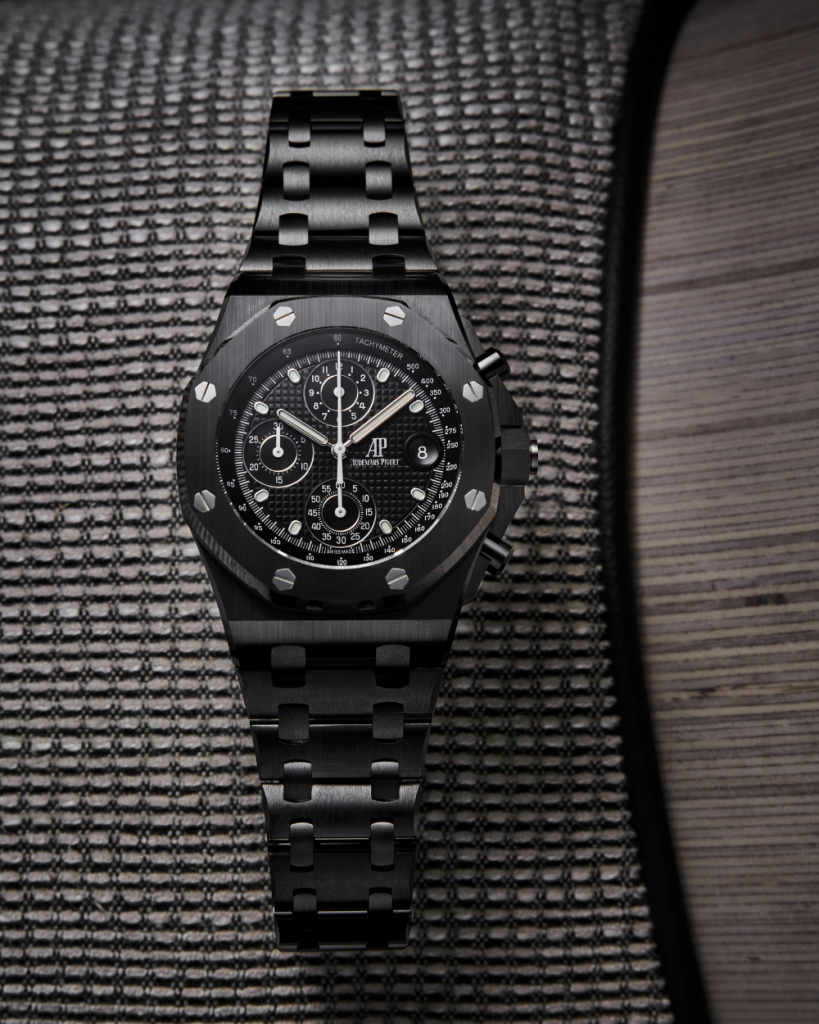
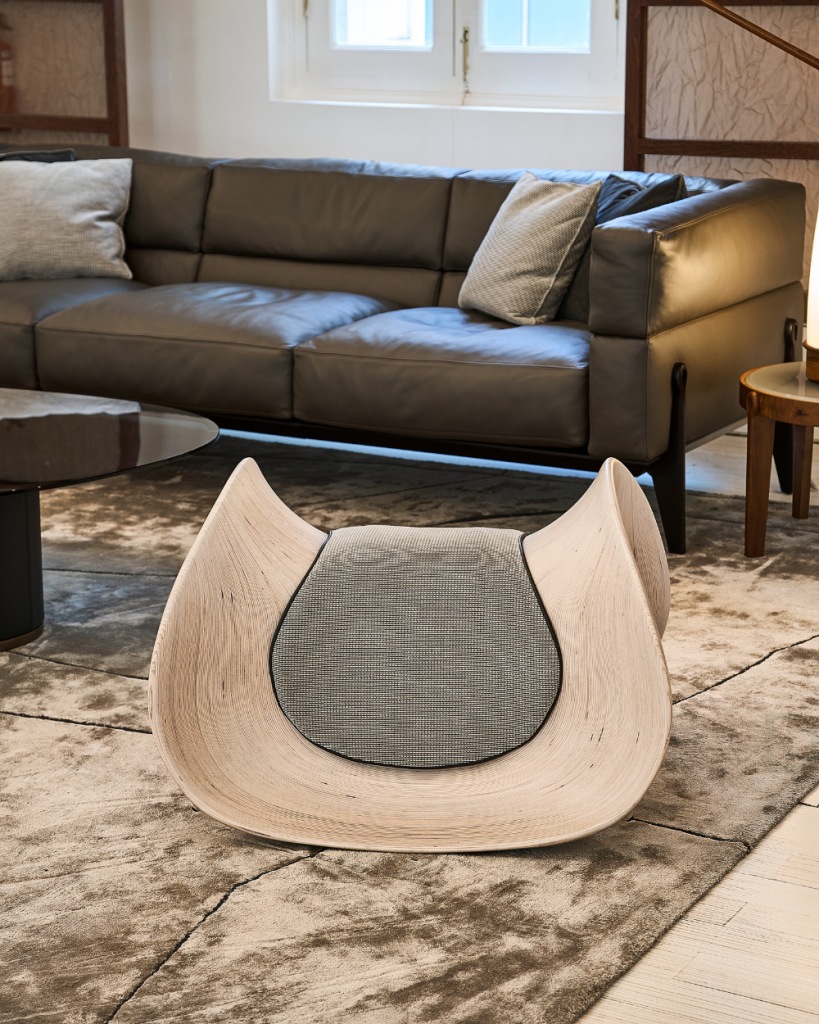
Left: Audemars Piguet Royal Oak Offshore Self-Winding Chronograph. Right: ‘Clop’ occasional chair in fabric and birch plywood by Dominic Siguang Ma & Feng Wei for Giorgetti.
A 42mm watch might not seem very big today – especially when compared to the 46 and 48mm examples that adorn, if not encumber, many a horophilic wrist – but back when the Audemars Piguet Royal Oak Offshore was launched in 1993, it was an outlier. Reviled by critics and slated to fail, the timepiece nonetheless found fans in Italy and received social cred when it was seen on the wrist of ski racer Alberto Tomba.
Today, there’s a year-long waitlist for a Royal Oak Offshore, attesting to the timepiece’s enduring appeal. Nicknamed ‘the beast’ when it was launched, the timepiece subverted all design norms of the day: Apart from its gigantic size, it also came with eight different dial colours paired with bright matching straps, a bold choice for the classical tastes of that period. Today, even Rolex – known for its safe designs – experiments with dial colours.
The Royal Oak Offshore continues to be a canvas for innovation for the brand and has inspired many other experimentations that have trickled into the mainstream.
Emotion in watchmaking: Van Cleef & Arpels Ponts des Amoureux
A watch tells the time. A watch can also be an expression of artistry. But can a watch express emotion? In the talented hands of the artisans of Van Cleef & Arpels, it certainly can. Case in point: The Ponts des Amoureux timepiece, where two lovers meet at a bridge, leaning in for a kiss at 12 o’clock.
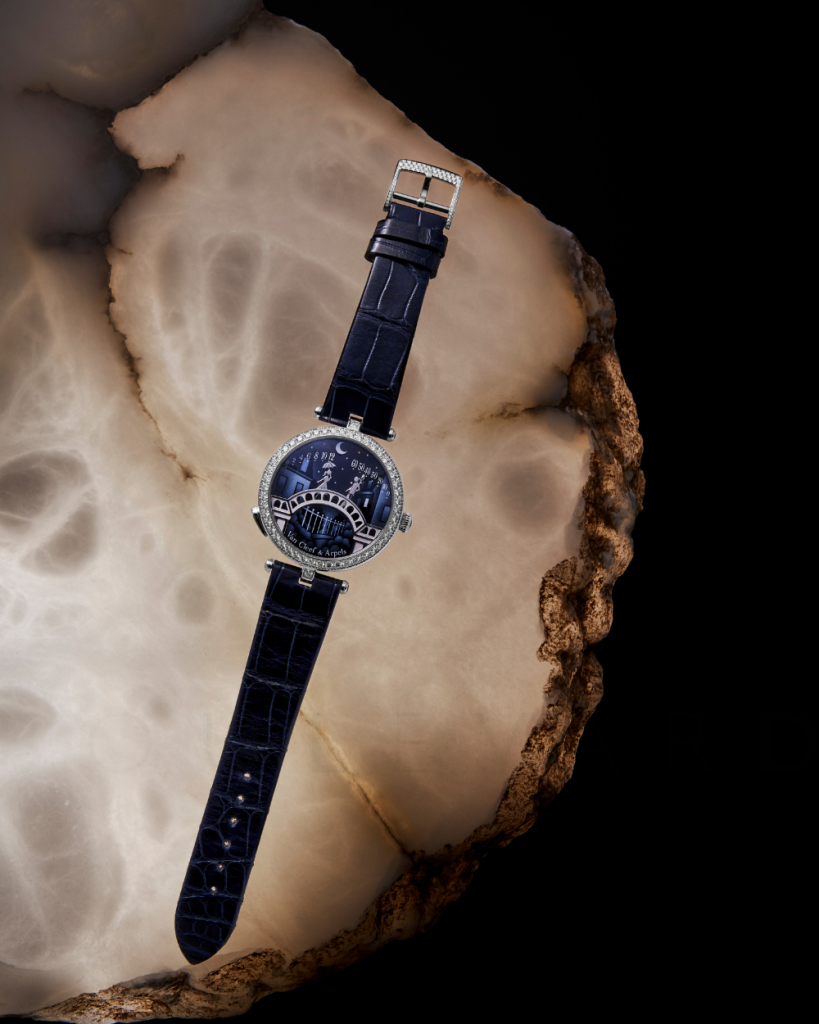
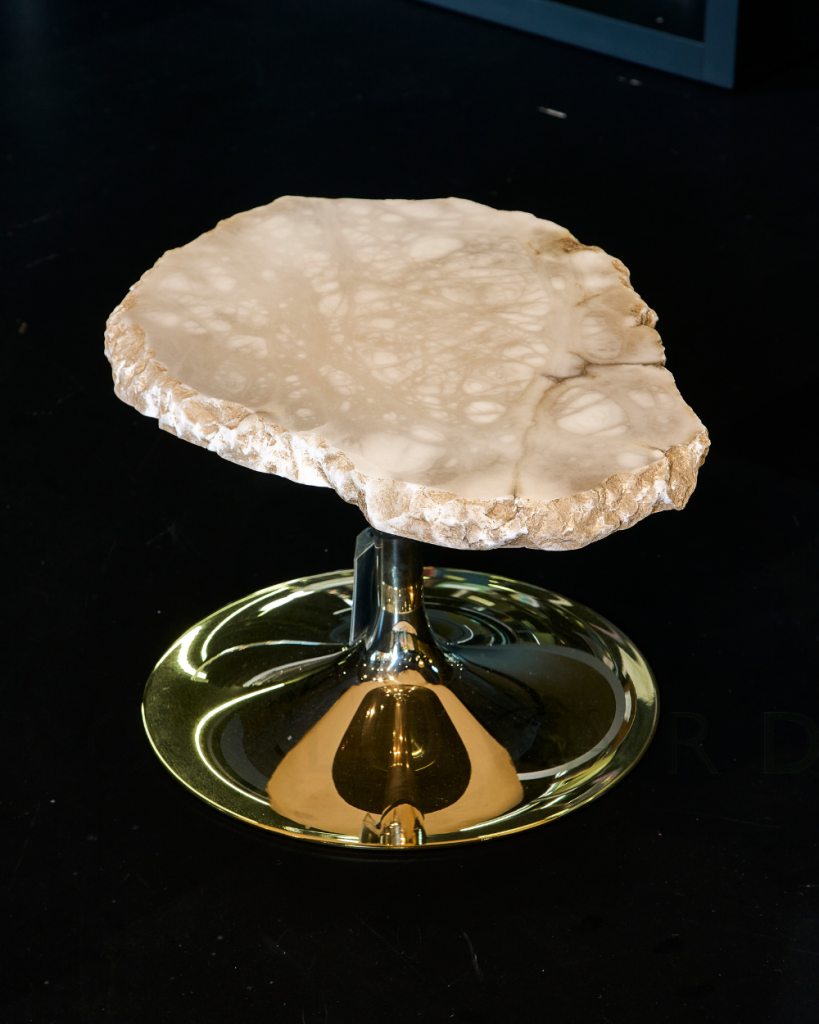
Left: Van Cleef & Arpels Ponts des Amoureux. Right: ‘Cicladi’ side table in solid alabaster by Jacopo Foggini for Edra.
It’s whimsical and endearing, two words that are not often bandied about in the horological universe. Since their launch in 2005, Van Cleef & Arpels’ Poetic Complications timepieces have featured butterflies, flowers and lovers, fluttering, blooming and kissing at the push of a button.
This kind of mechanism is called an automaton, and Van Cleef & Arpels is not the first maison to use it in watchmaking. Some historians argue that automatons and clockmaking flourished simultaneously, linked by the fact that both employ similar mechanical components. Some of the biggest proponents of automatons were watchmakers like Jaquet Droz and Ulysse Nardin.
But what Van Cleef & Arpels’ Poetic Complications collection did was to usher in an era of artistry, drama and heart – one where various crafts, including enamelling, painting and engraving, set the scene for a theatrical display, powered by intelligent mechanical systems. When you see the two lovers kissing at the bridge at 12, or flowers unfurling to reveal the time, the sentiment is beyond awe – it tugs at the heart, and brings a smile to the beholder’s face.
Thoughtful collaborations: Roger Dubuis Excalibur Spider Huracán Black DLC Titanium
Design collaborations can often be hit and miss – in the worst-case scenario, the watchmaker takes an existing watch, slaps its partner’s logo on the dial and, maybe, adds an element or two of its partner’s signature colour.
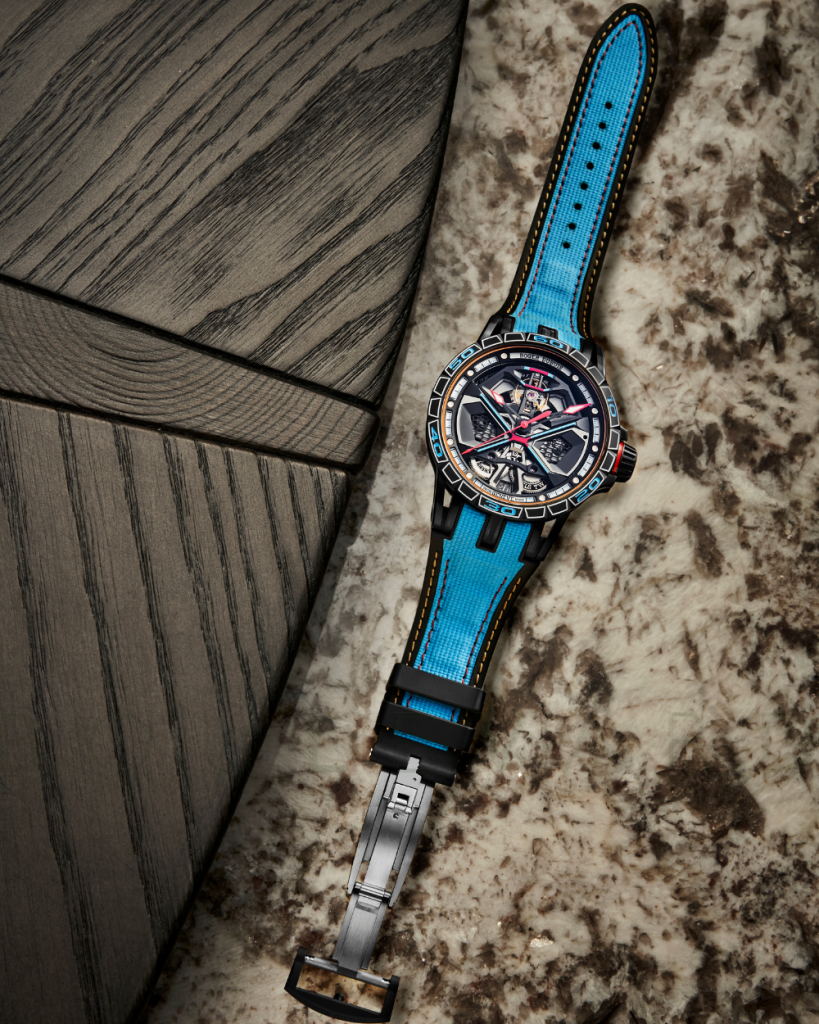

Left: Roger Dubuis Excalibur Spider Huracán Black DLC Titanium. Right: ‘Trail’ kitchen bench in Sensa granite and black elm by Carlo Colombo for Poliform.
This was often the case between watch and automobile partnerships, two industries that are closely linked. Things changed when Hublot launched the LaFerrari MP-05 in 2013 in partnership with Ferrari, a timepiece that takes the shape of a car engine.
It pushed watchmakers to think beyond the envelope when approaching partnerships and find ways of imbuing the DNA of both brands in the final product. This was most apparent when Roger Dubuis announced its partnership with Lamborghini in 2017 and launched their first collaborative timepiece in 2018. The Roger Dubuis Excalibur Aventador S timepieces were clearly well thought out, featuring plenty of motoring references that honour the Italian carmaker’s rebellious spirit: for instance, the Excalibur S was hewn from C-SMC carbon with a titanium container, the same material used on the Lamborghini Huracán Super Trofeo Evo. The movement, too, was built to resemble a Lamborghini engine, demonstrating the level of detail that went into this partnership.
Reducing our carbon footprint: Panerai Luminor Quaranta Razer
Independent watchmaker H Moser & Cie is known for building outrageous timepieces. In 2019, the brand launched its Nature watch with real plants. We won’t deny that it was a clear marketing gimmick, but it made for a potent commentary on the state of our planet. Up until then, the words “climate change” and “environment” had not yet entered the collective consciousness of the Swiss watchmaking industry. Brands like Omega had built manufactures with green measures in mind, but the traction had been slow.
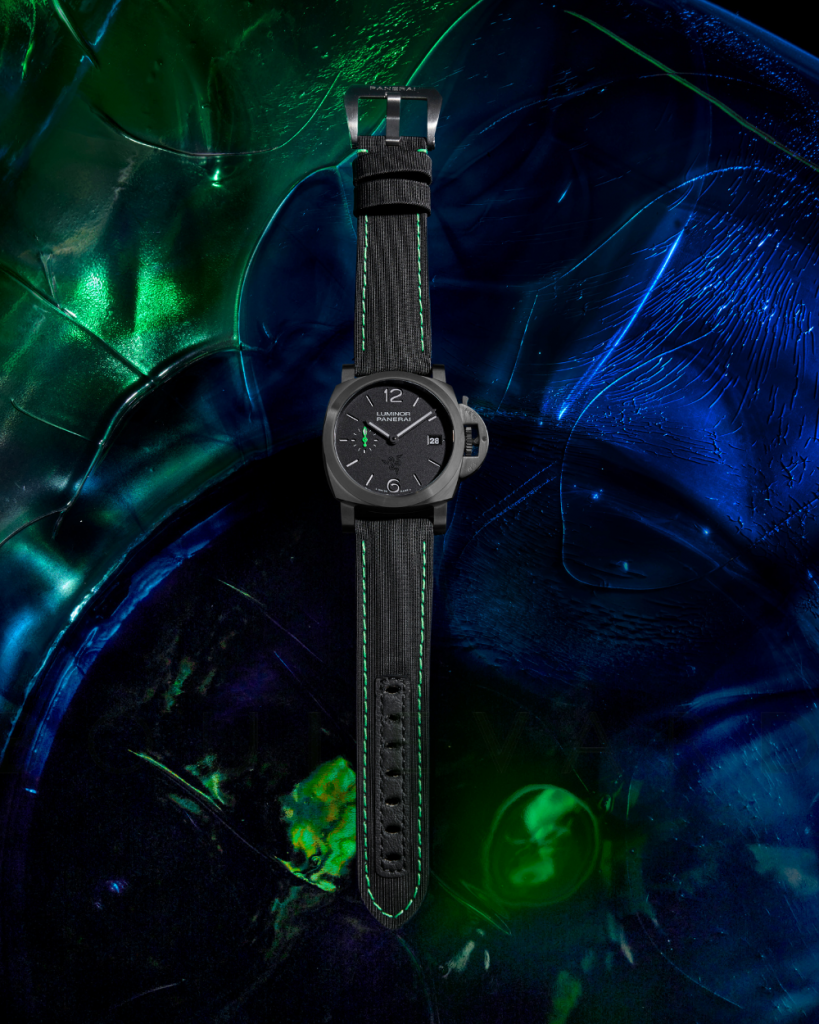
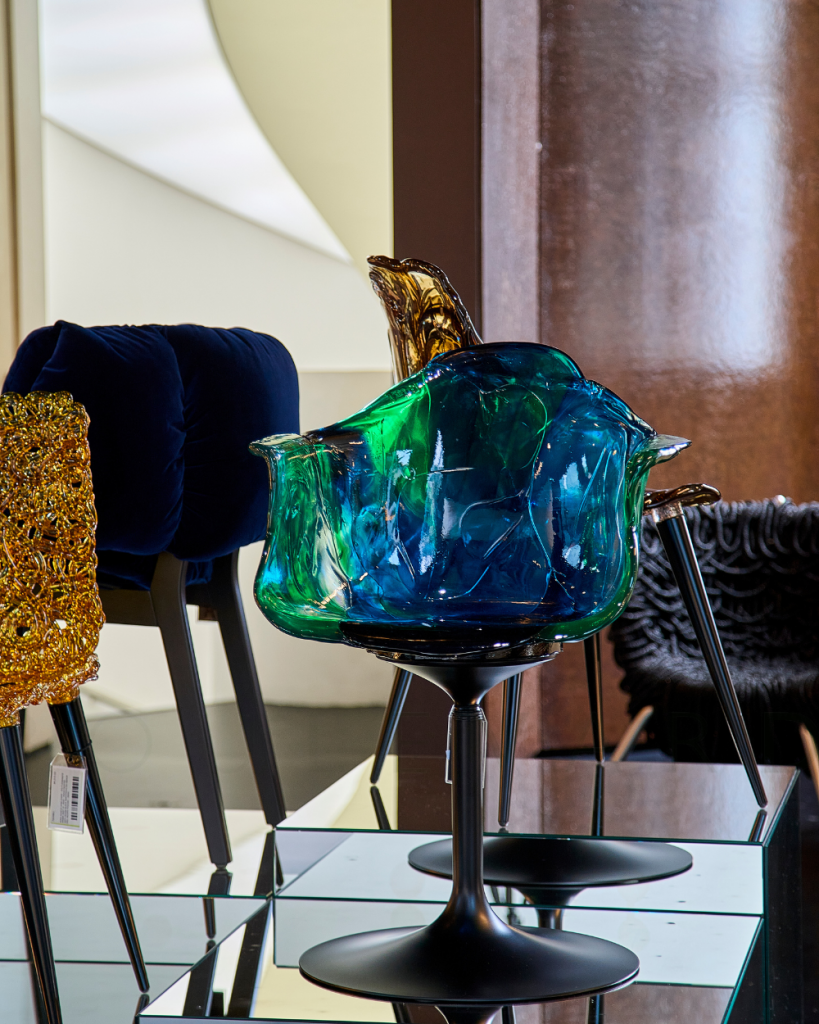
Left: Panerai Luminor Quaranta Razer. Right: ‘Ella’ chair with armrests in polycarbonate by Jacopo Foggini for Edra.
Then, Panerai released its e-Lab ID in 2021, of which 98.6 percent was made from recycled materials. Apart from the sheer boldness of the endeavour, it made headlines for releasing the names of the partners it had worked with to bring this timepiece to life, urging others in the horological industry to step up and adopt sustainable measures to reduce their environmental footprint.
Since then, the brand has launched a number of timepieces that are partly made from recycled materials, and follow sustainable practices. This Luminor Quaranta PAM01353, designed in partnership with Singapore gaming brand Razer, features eSteel, an alloy made from recycled materials.
What these watches signal is that it is possible for luxury watchmakers to think about circularity in production, without sacrificing design, comfort and sophistication.
Luxury sports watches: Vacheron Constantin Overseas Chronograph
It’s no secret that the luxury sports watch has been one of the biggest horological trends of recent years, and it would not be an overstatement to give some credit to Vacheron Constantin. Brands including Girard-Perregaux, Hermès, Omega and Jaeger-LeCoultre have all jumped on the bandwagon, reflecting the casual yet refined tastes of our times.
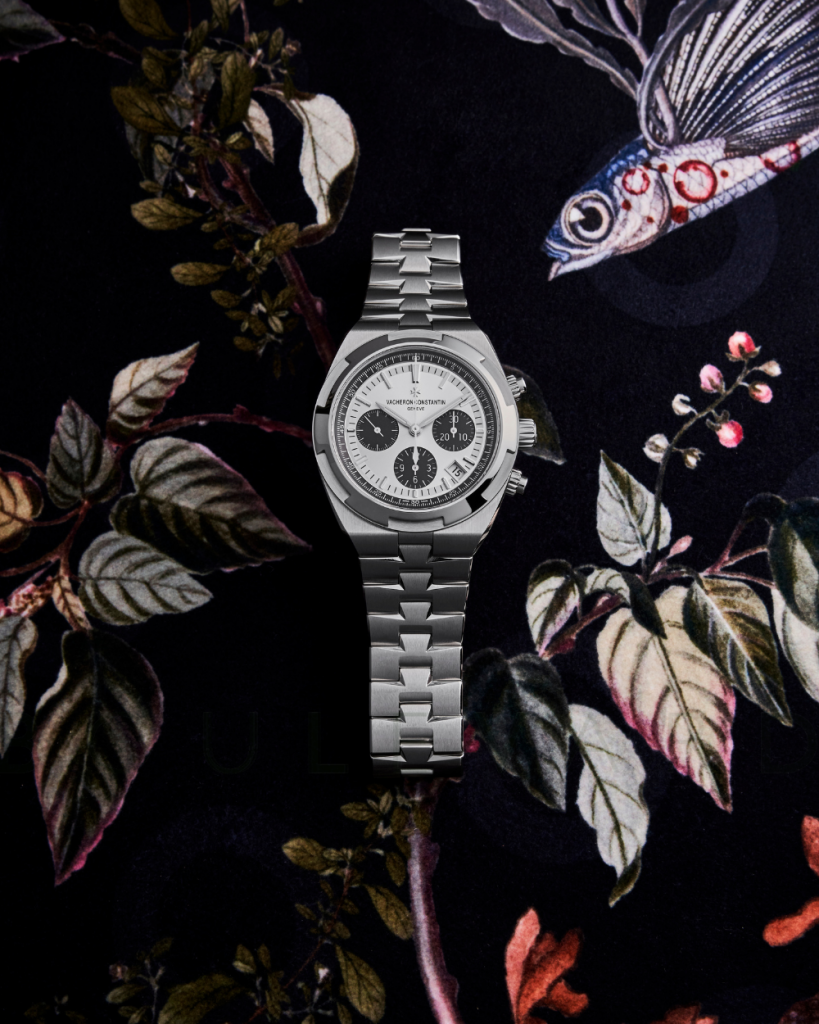

Left: Vacheron Constantin Overseas Chronograph. Right: ‘Hana’ armchair designed by Simone Bonnani for Moooi.
The luxury sports watch owes its origins to Audemars Piguet and Patek Philippe, who, with the Royal Oak and Nautilus respectively, kickstarted the trend back in the 1970s. As with all cyclical trends, it ebbed in the 2000s, until a series of fortuitous events relaunched the luxury sports watch. These include the resurgence of the Rolex Daytona as well as the renaissance of the Vacheron Constantin Overseas collection.
The Overseas has its roots in the 222 collection which had been designed by Jorg Hysek in the 1970s. Back then, the 222 was a reaction to the sports watch trend of that time. It was brought back briefly in the early 2000s. In an interview with Watchtime, Vacheron Constantin’s style and heritage director Christian Selmoni says that the second phase of the Overseas had “lost a bit of the elegance of the original Overseas”.
The third time’s the charm, clearly. When the Overseas was brought back to life in 2016, the team delved into its archives for inspiration, while tapping into the current cultural zeitgeist. It was a gamble for the Swiss brand that had always been known for its classic timepieces. But the Overseas proved to be seminal for both the brand and the industry itself. Today, there’s a waiting list for the Overseas (in fact, we were lucky to even snag a piece for this photo shoot). Distinguished by its case design featuring a six-sided bezel, excellent finishing and an interchangeable strap system, the timepiece now comes in various iterations including chronographs and world timers.
